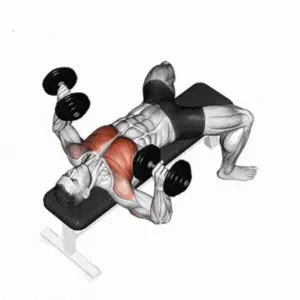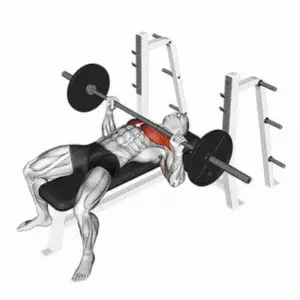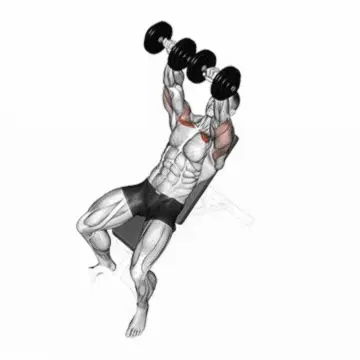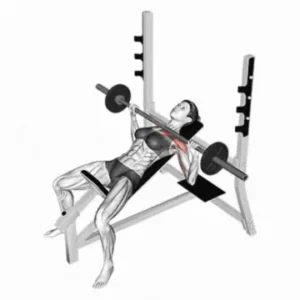Barbell Flat Bench Press Chest: Best Form, Faults & 10 Benefits
Introduction
Bench press is one of the most popular exercises in the fitness world. It is a compound exercise that targets multiple muscle groups, including the chest, shoulders, and triceps. The bench press is often performed using a barbell and a flat bench, hence its name, the barbell flat bench press. In this article, we will discuss the correct form for the barbell flat bench press, common faults to avoid, and ten benefits of incorporating this exercise into your workout routine.
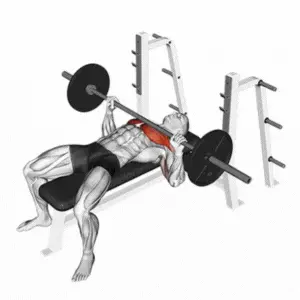
Best Form and Instructor for the Barbell Flat Bench Press
Before performing the barbell flat bench press, it is crucial to have proper form to prevent injury and maximize the benefits of the exercise. The following steps outline the correct form for the barbell flat bench press:
- Lie flat on the bench with your feet firmly planted on the ground.
- Position yourself so that your eyes are directly under the barbell.
- Grip the barbell with your hands shoulder-width apart and your palms facing away from you.
- Unrack the barbell by lifting it off the rack and bringing it over your chest.
- Lower the barbell towards your chest in a controlled manner, while keeping your elbows tucked in towards your body.
- Touch your chest with the barbell, and then push it back up to the starting position.
- Repeat the exercise for the desired number of repetitions.
It is important to note that while performing the barbell flat bench press, your back should remain flat against the bench, and your feet should remain planted on the ground. Also, you should breathe in as you lower the barbell towards your chest and breathe out as you push it back up.
For beginners, it is highly recommended to work with a qualified fitness instructor to ensure proper form and technique. They can provide guidance on the correct form, the number of repetitions and sets to perform, and also help to identify any potential faults that may be hindering progress.
Common Faults to Avoid
Performing the barbell flat bench press with improper form can result in injury and limit the effectiveness of the exercise. The following are some common faults to avoid:
Arching the Back: Arching the back during the exercise puts unnecessary strain on the lower back and can lead to injury.
Flaring the Elbows: Flaring the elbows outwards during the exercise puts more strain on the shoulders and can lead to shoulder pain.
Lifting the Hips: Lifting the hips during the exercise reduces the effectiveness of the exercise and can lead to injury.
Not Using a Spotter: Not using a spotter while lifting heavy weights can be dangerous and can lead to injury if the lifter is unable to complete the repetition.
Bouncing the Barbell: Bouncing the barbell off the chest can lead to injury and reduces the effectiveness of the exercise.
10 Benefits of the Barbell Flat Bench Press
Increases Upper Body Strength: The barbell flat bench press targets multiple upper body muscles, including the chest, shoulders, and triceps, and can help to increase overall upper body strength.
Enhances Muscle Mass: The barbell flat bench press is a compound exercise that targets multiple muscle groups and can help to enhance muscle mass.
Improves Bone Health: Resistance training, such as the barbell flat bench press, can help to increase bone density, which can reduce the risk of osteoporosis.
Increases Metabolic Rate: The barbell flat bench press is a high-intensity exercise that can increase the metabolic rate and promote fat loss.
Enhances Athletic Performance: The barbell flat bench press can help to improve athletic performance by increasing upper body strength and power.
Increases Endurance: The barbell flat bench press can help to increase endurance by challenging the muscles to perform high-intensity exercises for an extended period of time.
Improves Posture: The barbell flat bench press can help to improve posture by strengthening the muscles of the upper back, shoulders, and chest, which can help to prevent slouching.
Boosts Confidence: The barbell flat bench press can help to boost confidence by increasing strength and muscle mass, which can help to improve overall self-esteem.
Increases Bone Strength: The barbell flat bench press can help to increase bone strength by placing stress on the bones, which can lead to an increase in bone density.
Improves Cardiovascular Health: The barbell flat bench press can help to improve cardiovascular health by increasing the heart rate and promoting blood flow throughout the body.
What is flat bench press good for?
Flat bench press is good for building upper body strength and muscle mass. It primarily targets the chest, shoulders, and triceps, but also engages other supporting muscles in the upper body.
What muscles do flat bench press work?
The flat bench press primarily works the pectoralis major (chest muscles), anterior deltoids (front of the shoulders), and triceps brachii (upper arm muscles). It also engages other muscles, such as the serratus anterior (muscles on the side of the chest), the rhomboids and traps (upper back muscles), and the biceps (front of the upper arm).
Is flat barbell bench necessary?
While there are other exercises that can work the same muscles as the flat barbell bench press, it is a highly effective exercise for building upper body strength and muscle mass. It is not necessarily “necessary,” but it is a popular and effective exercise for those looking to improve their upper body strength and aesthetics.
What is the difference between bench press and barbell bench press?
The bench press is a general term for any exercise that involves pressing a weight away from the body while lying on a bench. This can include exercises using dumbbells, barbells, or even a machine. The barbell bench press specifically refers to performing the exercise with a barbell, where the weight is evenly distributed across the bar.
World Record Bench Press
The current world record (equipped, with shirt) is held by Jimmy Kolb: on Feb. 27, 2022, at the 2022 IPA Pennsylvania State Powerlifting Championships, he successfully locked out 599 kg (1,320 lb), beating the previous record by more than 86 kg (190 lb).
Barbell Bench Press Set Details
A bench press set typically includes several components, including the bench press itself, a barbell with weights, and safety equipment.
Bench Press: The bench press is a weight training exercise that involves lying flat on a bench and pushing a weight away from the chest using the arms and chest muscles. There are different types of bench presses, including the flat bench press, incline bench press, and decline bench press.
Barbell: The barbell is a long metal bar with weights attached to either end. It is used to provide resistance during the bench press exercise. The weight of the barbell can vary depending on the individual’s fitness level and strength.
Weights: Weights are added to the barbell to increase resistance during the bench press exercise. The weight of the weights can vary, and can be adjusted based on the individual’s fitness level and strength.
Safety Equipment: Safety equipment is important when performing the bench press exercise to prevent injury. This may include a weightlifting belt to provide support to the lower back, wrist wraps to support the wrists, and collars to secure the weights on the barbell.
During a bench press set, the individual typically performs a specific number of repetitions, or reps, and sets. A rep refers to one complete movement of the exercise, while a set refers to a group of reps. The number of reps and sets can vary based on the individual’s fitness goals and workout plan. It is important to maintain proper form and technique throughout the bench press set to prevent injury and maximize the effectiveness of the exercise.


